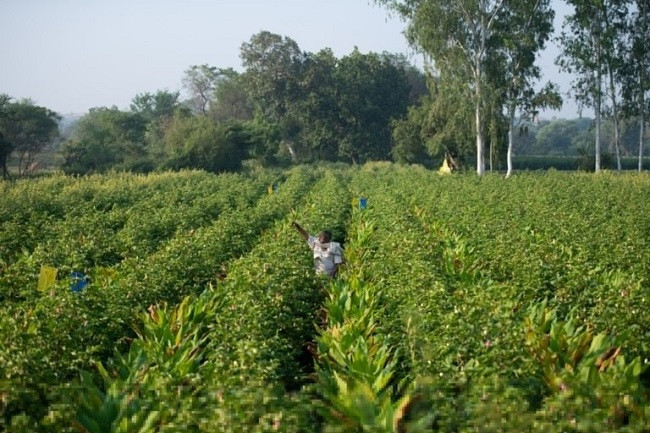Bangladesh, a densely populated country with a population of around 170 million, primarily relies on rice and vegetable cultivation to meet its food requirements. The limited availability of land poses a significant challenge for diversifying agricultural practices, making cotton cultivation seem unfeasible. However, through the adoption of regenerative agricultural practices, new possibilities emerge for integrating cotton cultivation into the existing agricultural landscape. This article explores the potential of regenerative agriculture in Bangladesh, emphasizing the cultivation of cotton alongside vegetables in highland areas. By implementing regenerative agricultural practices, such as agroforestry, crop rotation, and cover cropping, Bangladesh can improve land productivity, enhance sustainability, and promote economic growth.
Regenerative Agricultural Practice in context of Bangladesh
Bangladesh faces the dual challenge of meeting the food demands of its growing population and diversifying its agricultural sector. While rice and vegetable cultivation have been the primary focus, there is a need to explore alternative crops like cotton. Regenerative agricultural practices offer a promising solution, allowing for the cultivation of cotton alongside vegetables in highland areas. This article aims to shed light on the potential benefits and challenges associated with such a system.

Figure: : A regenerative cotton field under Patagonia Regenerative Organic Certified Cotton.
Regenerative Agriculture
Regenerative agriculture represents a holistic approach that focuses on restoring and enhancing ecosystem functions within the agricultural landscape. It emphasizes soil health, biodiversity, and water conservation. By adopting regenerative agricultural practices, farmers can improve soil fertility, mitigate climate change, and enhance overall sustainability.
Challenges of Cotton Cultivation in Bangladesh
The traditional perception of cotton cultivation as land-intensive has hindered its adoption in densely populated countries like Bangladesh. However, by embracing regenerative agricultural practices, farmers can overcome these challenges. Regenerative agriculture offers the opportunity to integrate cotton into the existing agricultural system, making efficient use of limited land resources.
Agroforestry
Agroforestry, an integral component of regenerative agriculture, involves the deliberate integration of trees and crops. In highland areas where vegetable cultivation thrives, trees can be strategically planted to provide shade and windbreaks for cotton plants. The trees also serve as a valuable source of timber, fruits, and other non-timber forest products, diversifying farmers’ income streams.
Crop Rotation
Crop rotation plays a crucial role in regenerative agriculture by breaking pest and disease cycles, reducing soil erosion, and enhancing soil fertility. Integrating cotton into the existing crop rotation system can provide farmers with an additional cash crop while simultaneously benefiting the soil and other rotational crops. Proper planning and management are essential to ensure an optimal crop rotation sequence that maximizes productivity and minimizes risks.
Cover Cropping
Cover cropping involves growing specific crops during fallow periods or alongside cash crops to protect and enrich the soil. By including cover crops in the cotton-vegetable system, farmers can prevent soil erosion, suppress weed growth, improve water retention, and enhance soil structure. Leguminous cover crops can also fix atmospheric nitrogen, reducing the need for synthetic fertilizers.
Economic Opportunities
The integration of cotton cultivation with vegetables through regenerative agricultural practices opens up new economic opportunities for farmers. Cotton is a high-value cash crop with both domestic and international market demand. By diversifying their income sources, farmers can reduce dependence on a single crop and achieve greater economic stability.
Environmental Benefits
Regenerative agricultural practices have several environmental benefits. The integration of trees in agroforestry systems helps sequester carbon, mitigating climate change impacts. The use of cover crops reduces the need for chemical inputs and improves soil health. The overall result is a more sustainable and resilient agricultural system that supports long-term environmental conservation.
Socio-cultural Impacts
The adoption of regenerative agricultural practices and the integration of cotton cultivation can have positive socio-cultural impacts. It can provide employment opportunities, particularly for women and marginalized communities. Additionally, it can promote traditional handicrafts and industries related to cotton, contributing to cultural preservation and heritage.
Concluding Remarks
While Bangladesh faces the challenge of limited land availability for agricultural diversification, regenerative agricultural practices offer a solution to integrate cotton cultivation alongside vegetables. Through the strategic implementation of agroforestry, crop rotation, and cover cropping, farmers can enhance land productivity, foster environmental sustainability, and improve socio-economic conditions. Further research, policy support, and farmer education are essential for the successful adoption and scaling up of regenerative agricultural practices in densely populated countries like Bangladesh. Embracing regenerative agriculture will not only transform the agricultural sector but also contribute to global efforts towards sustainable development.







